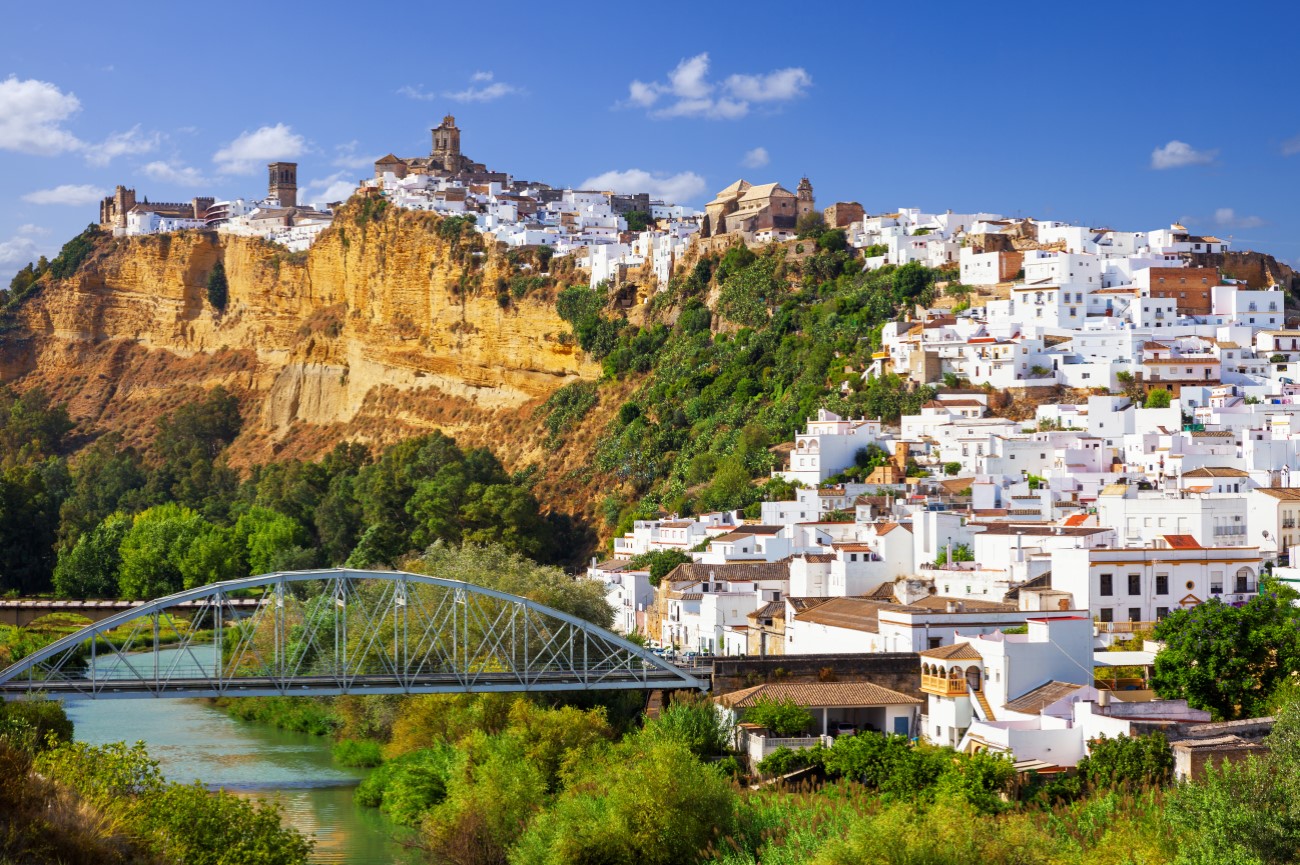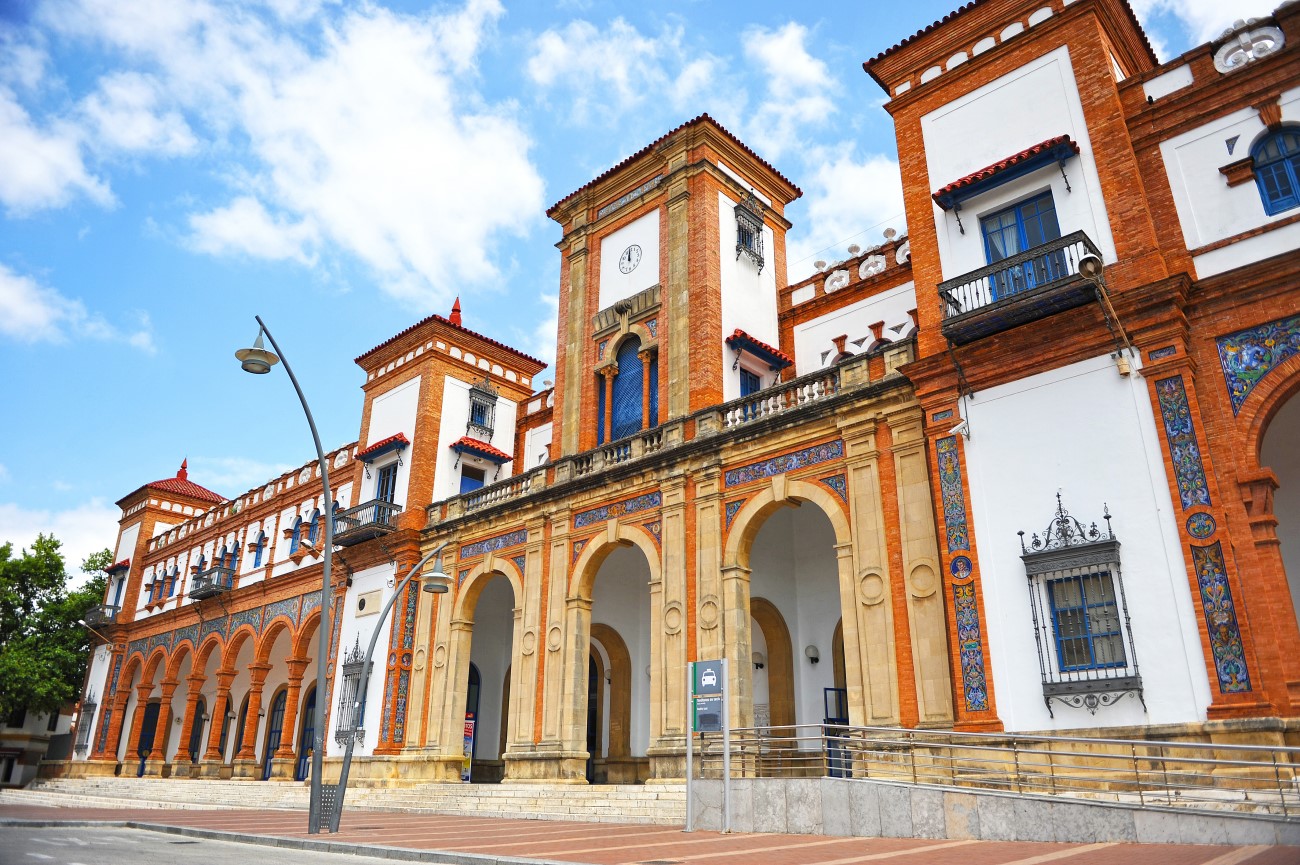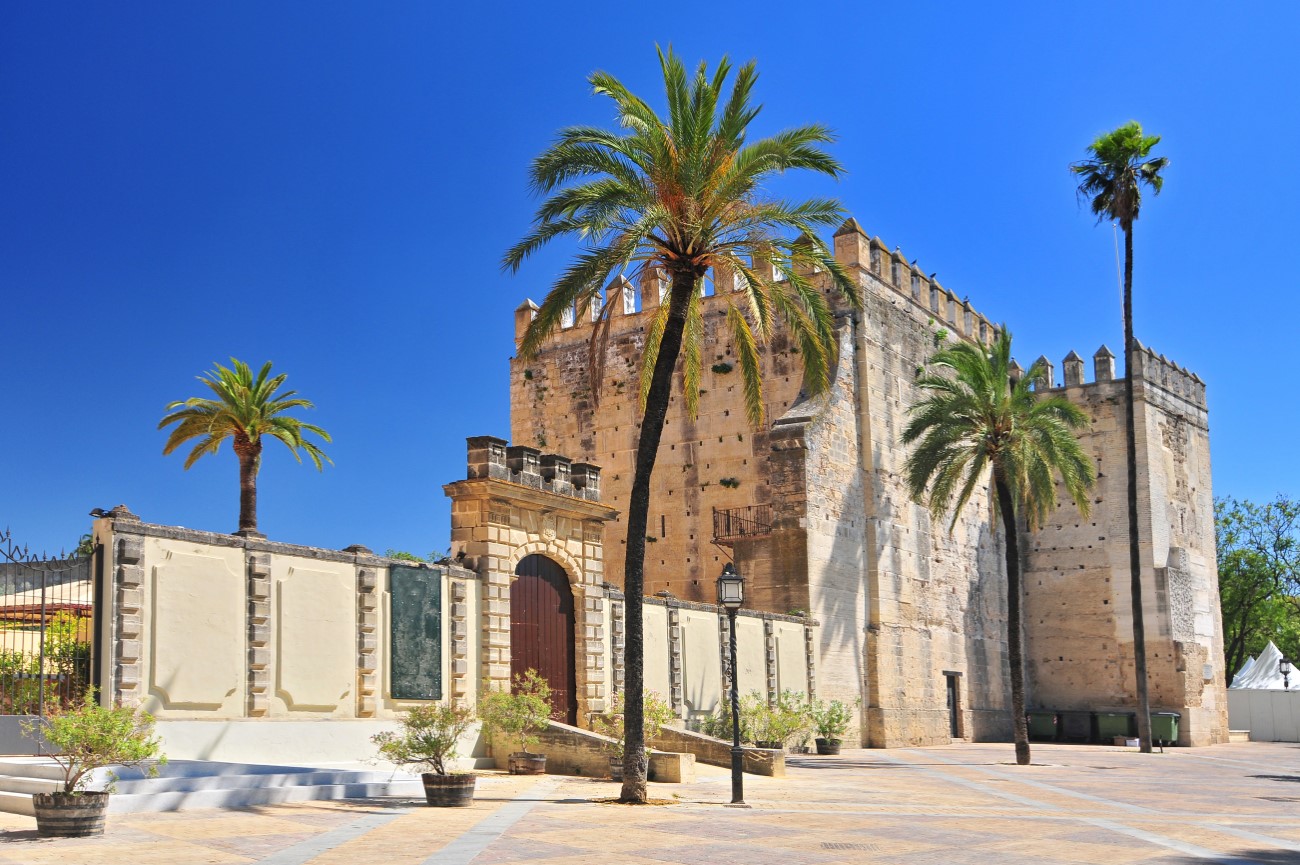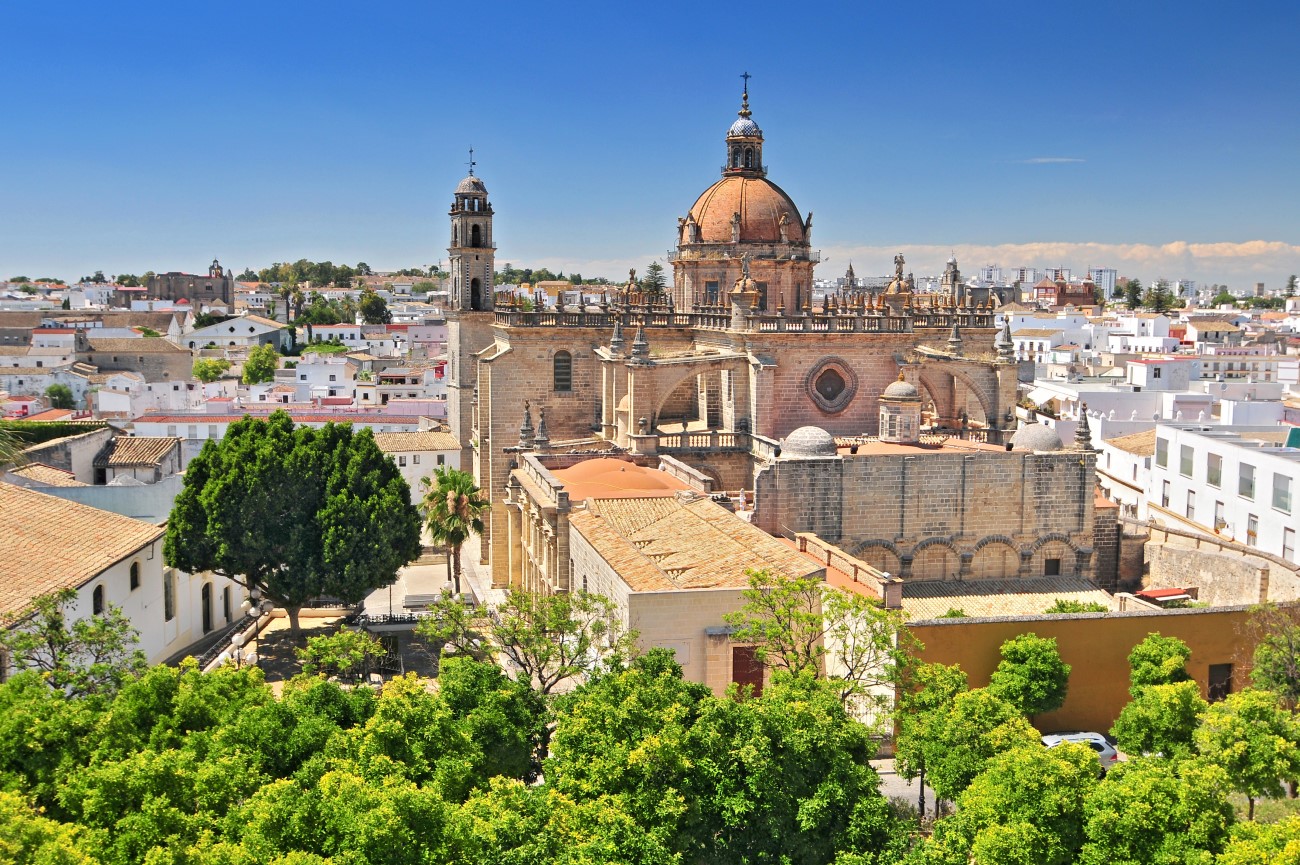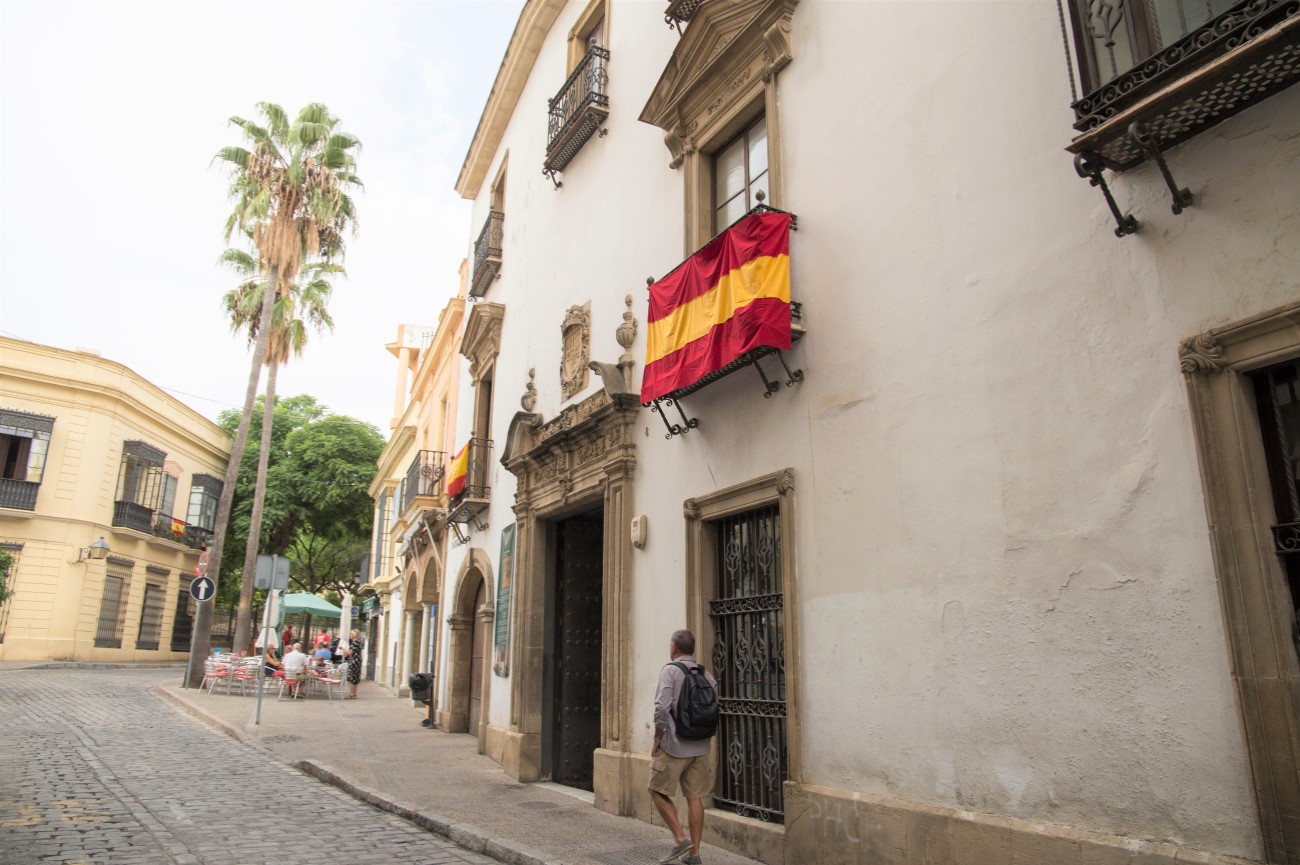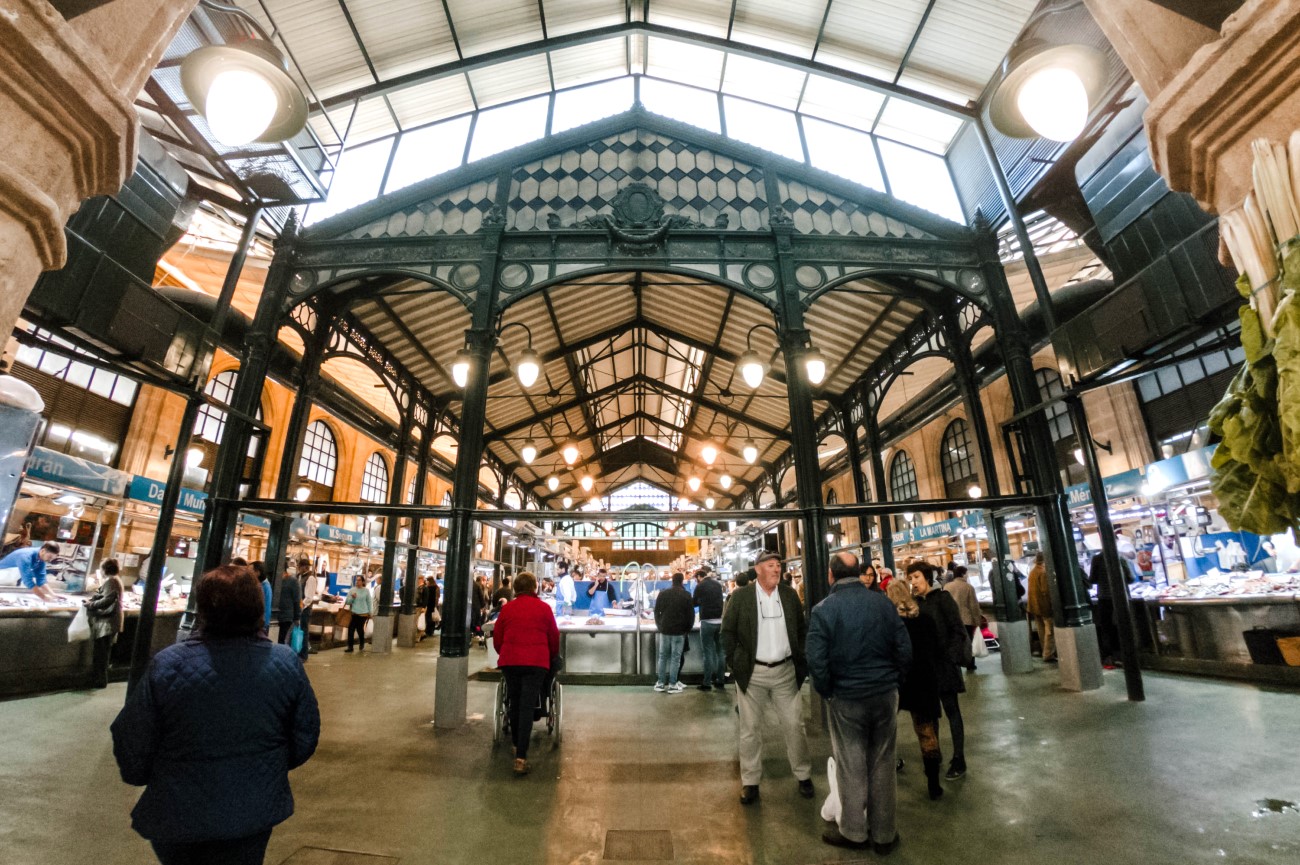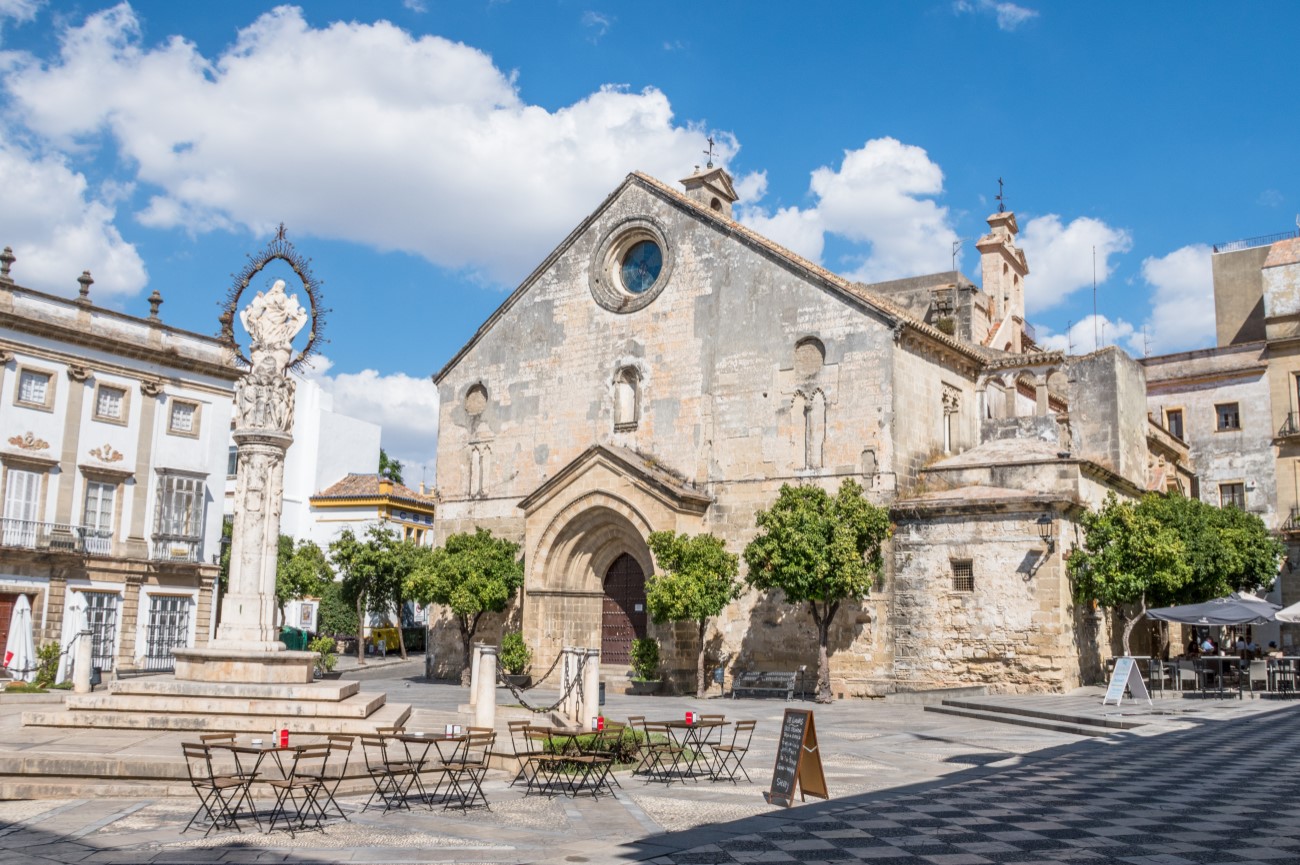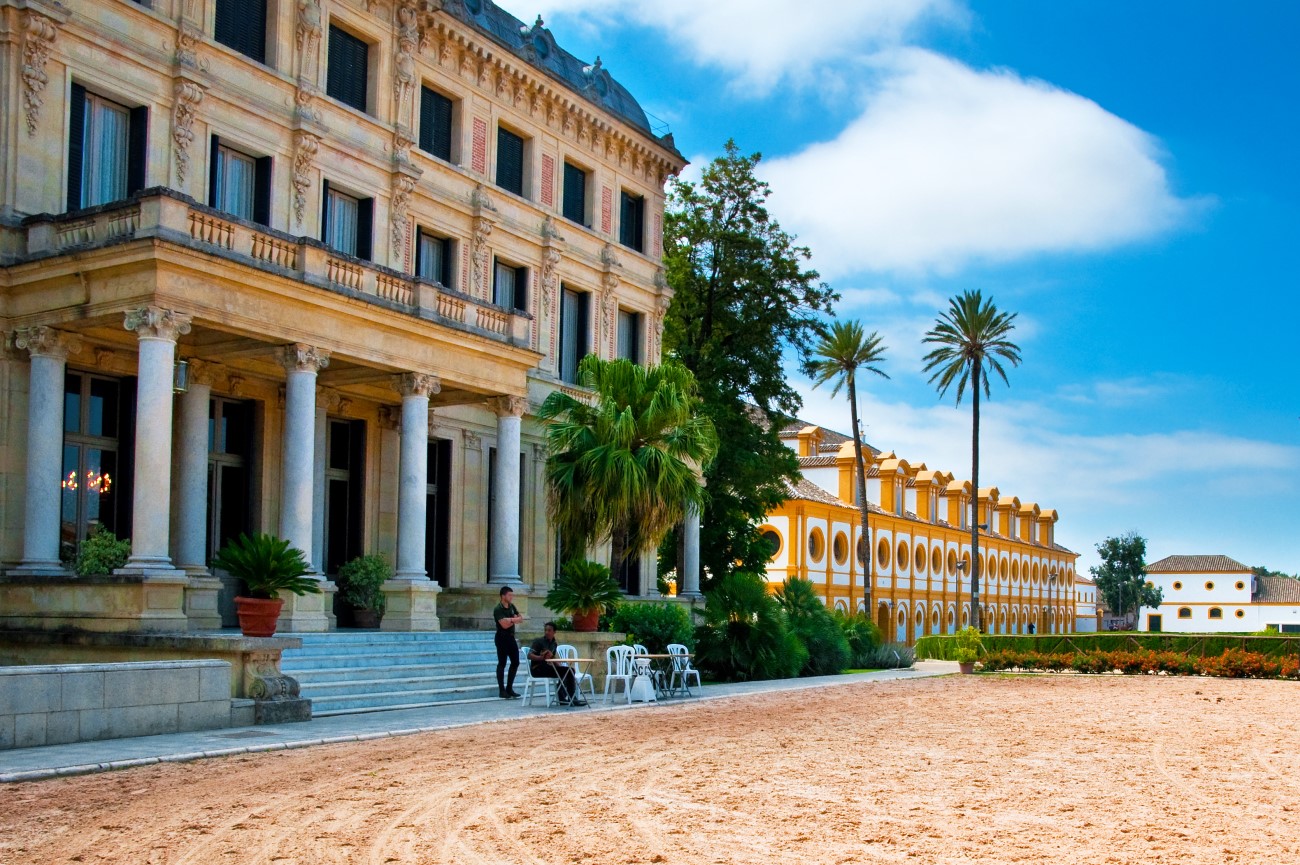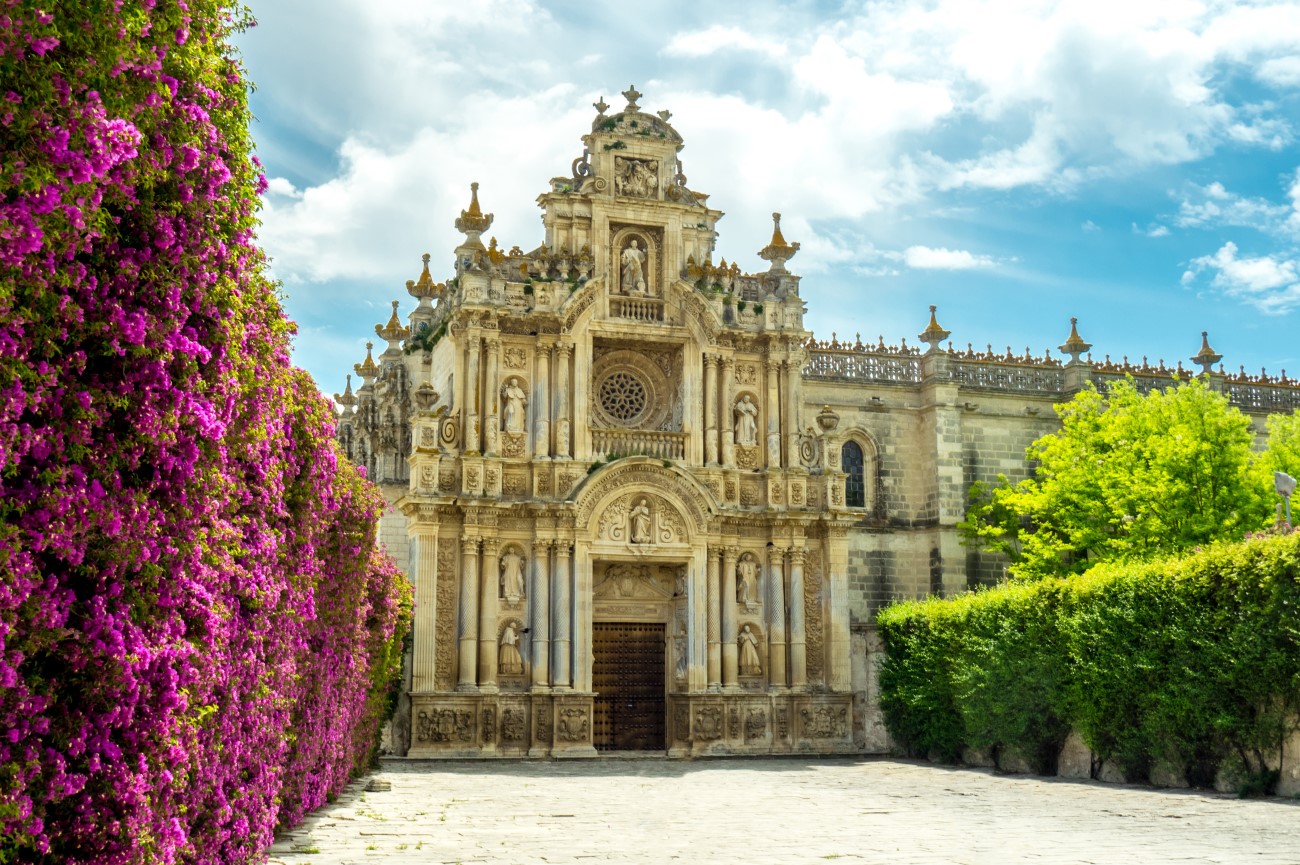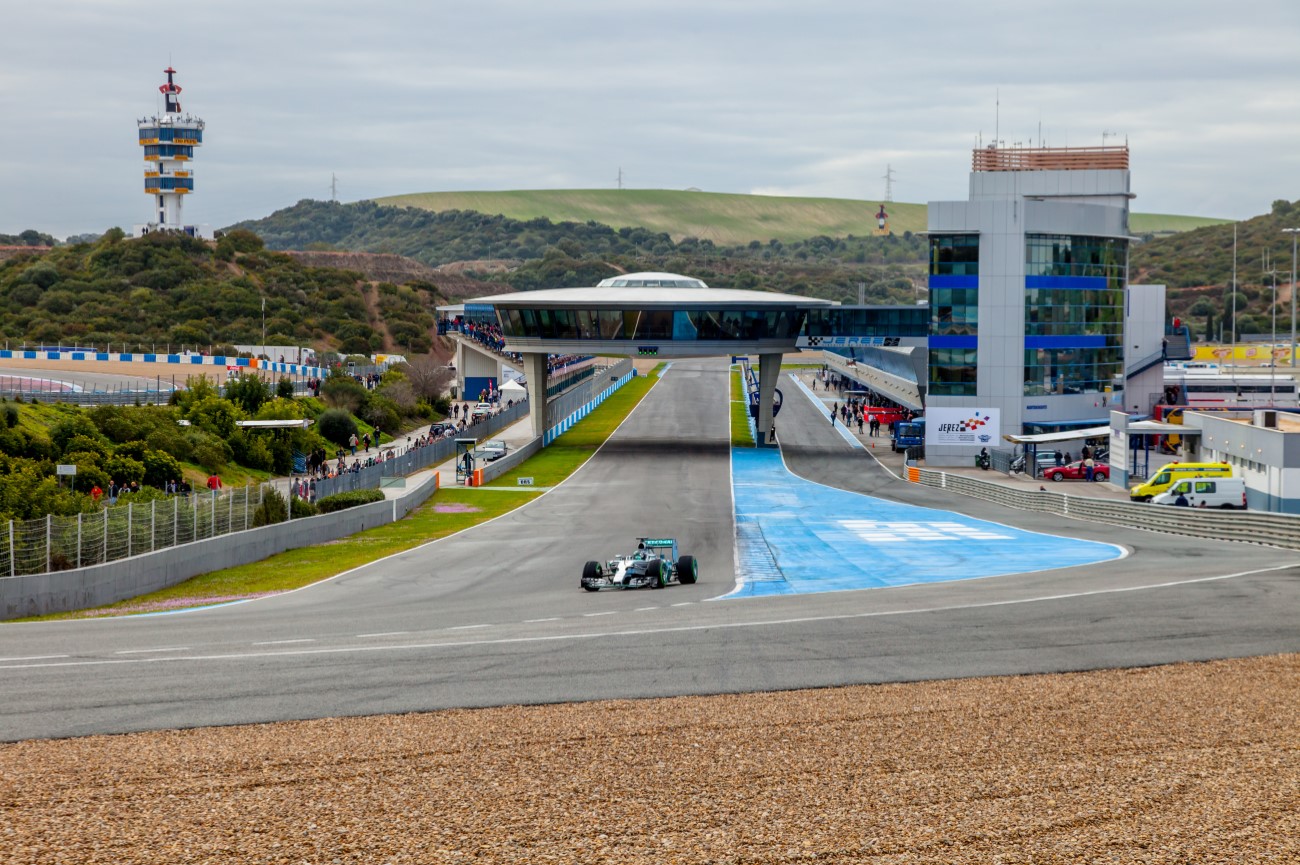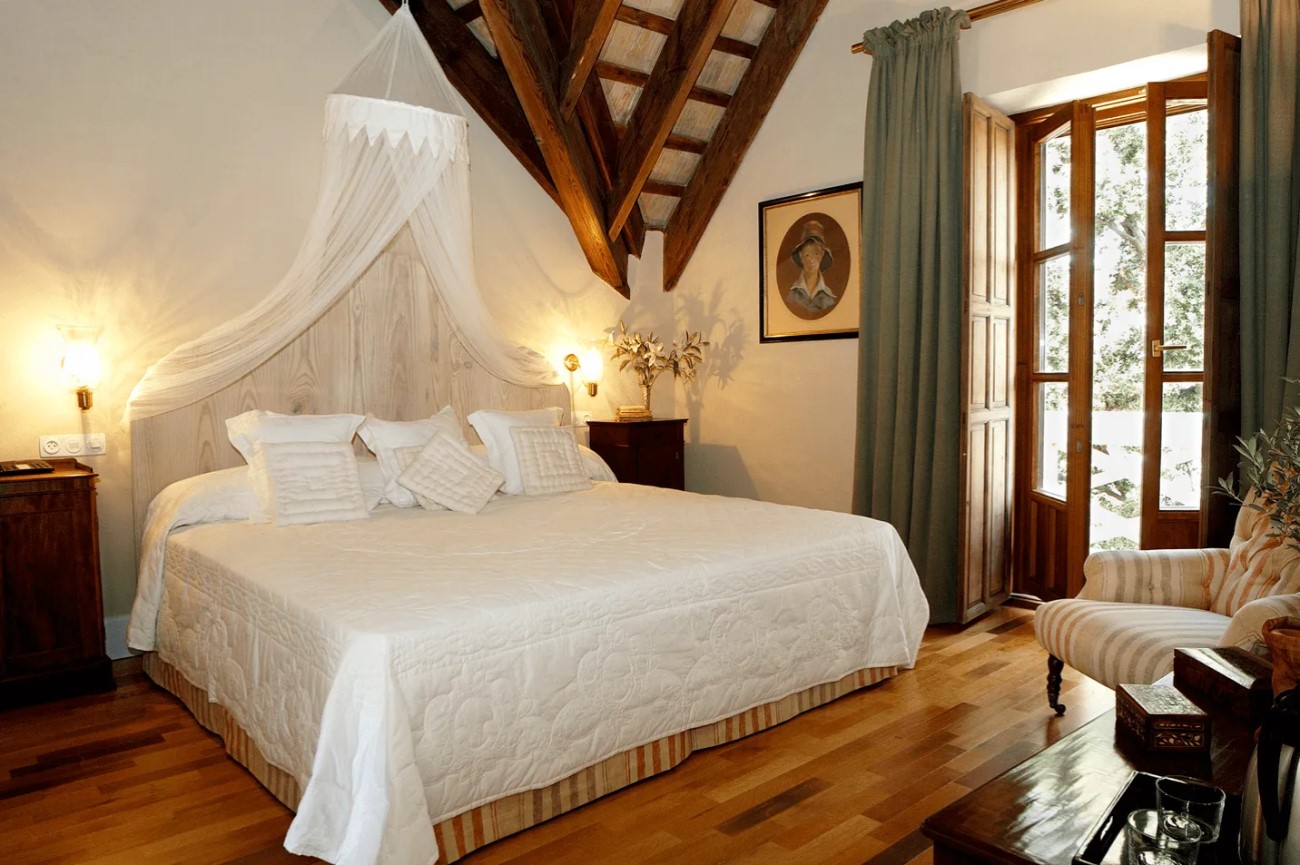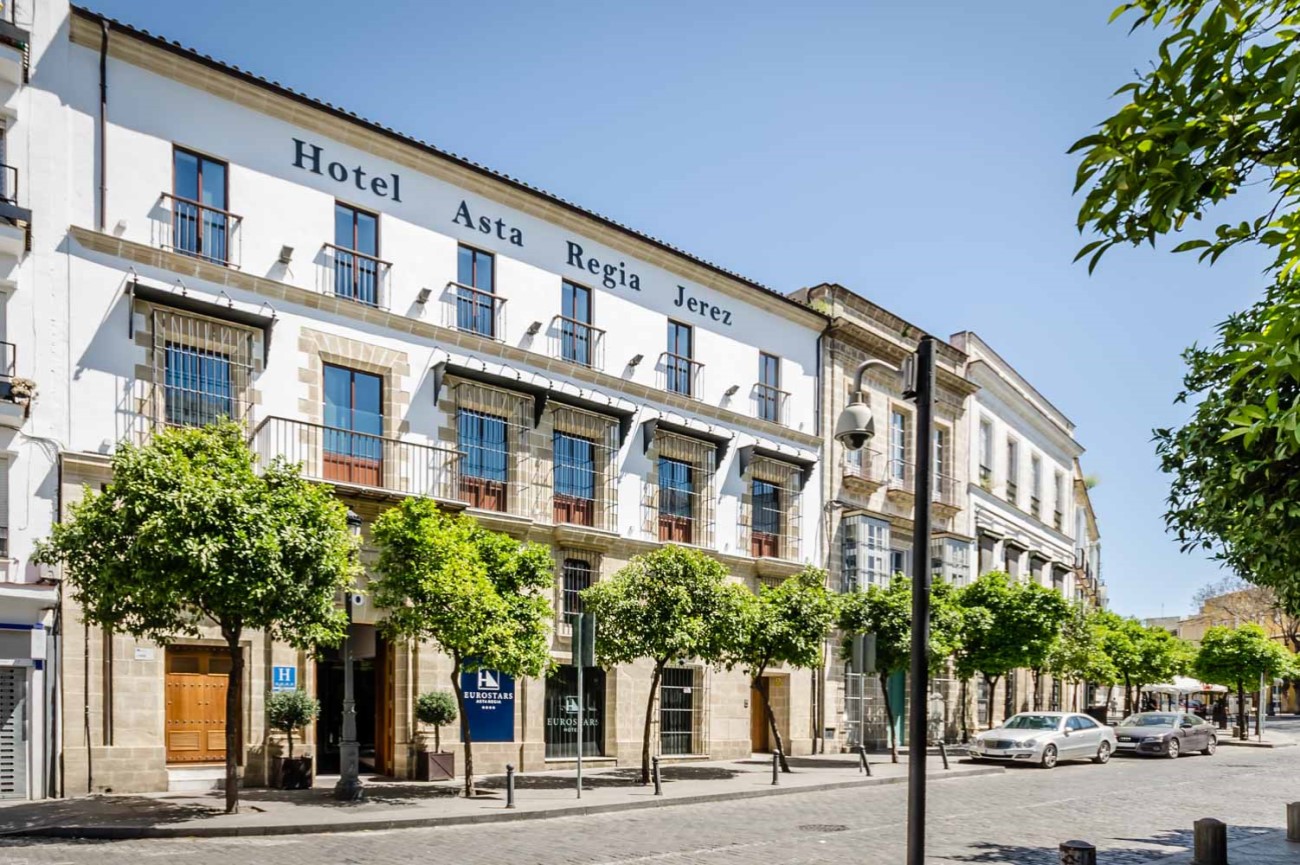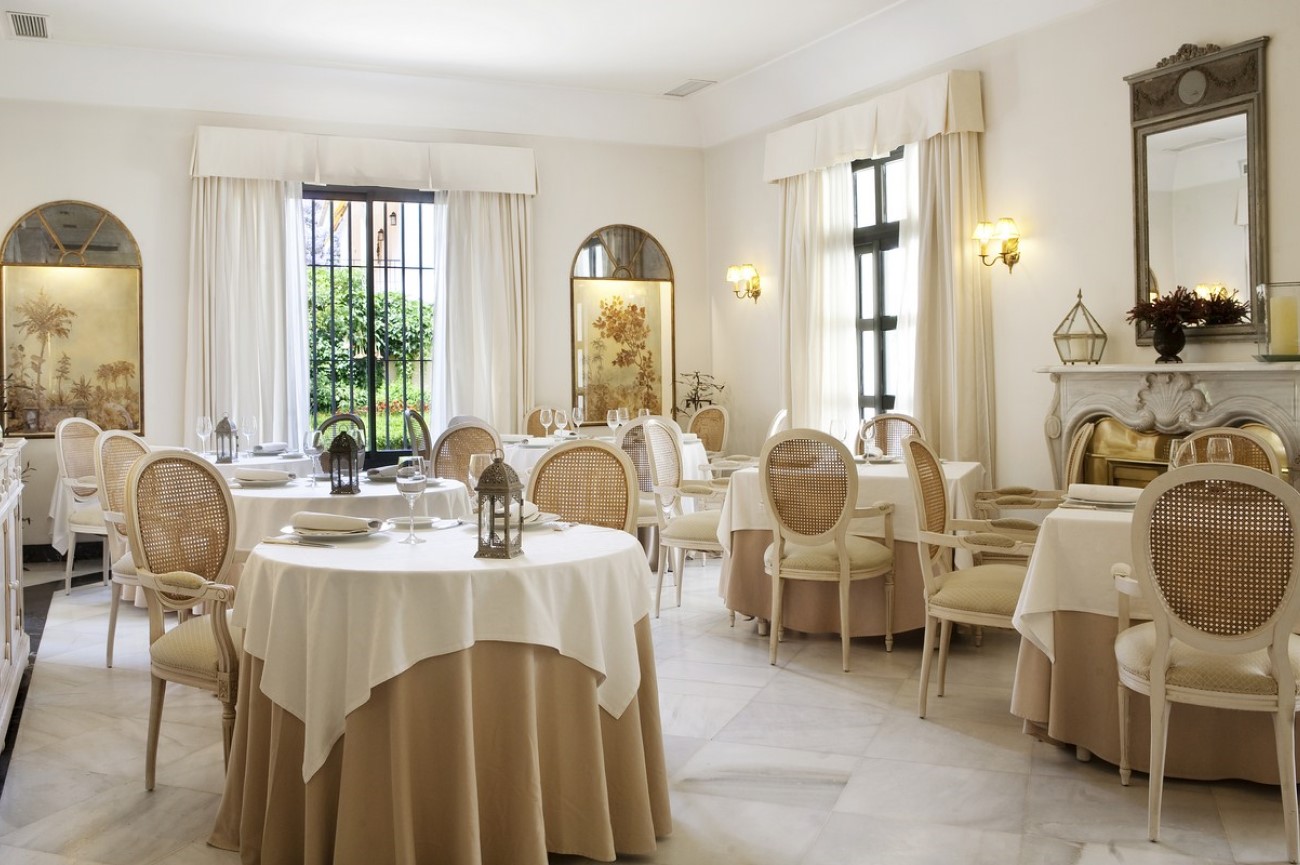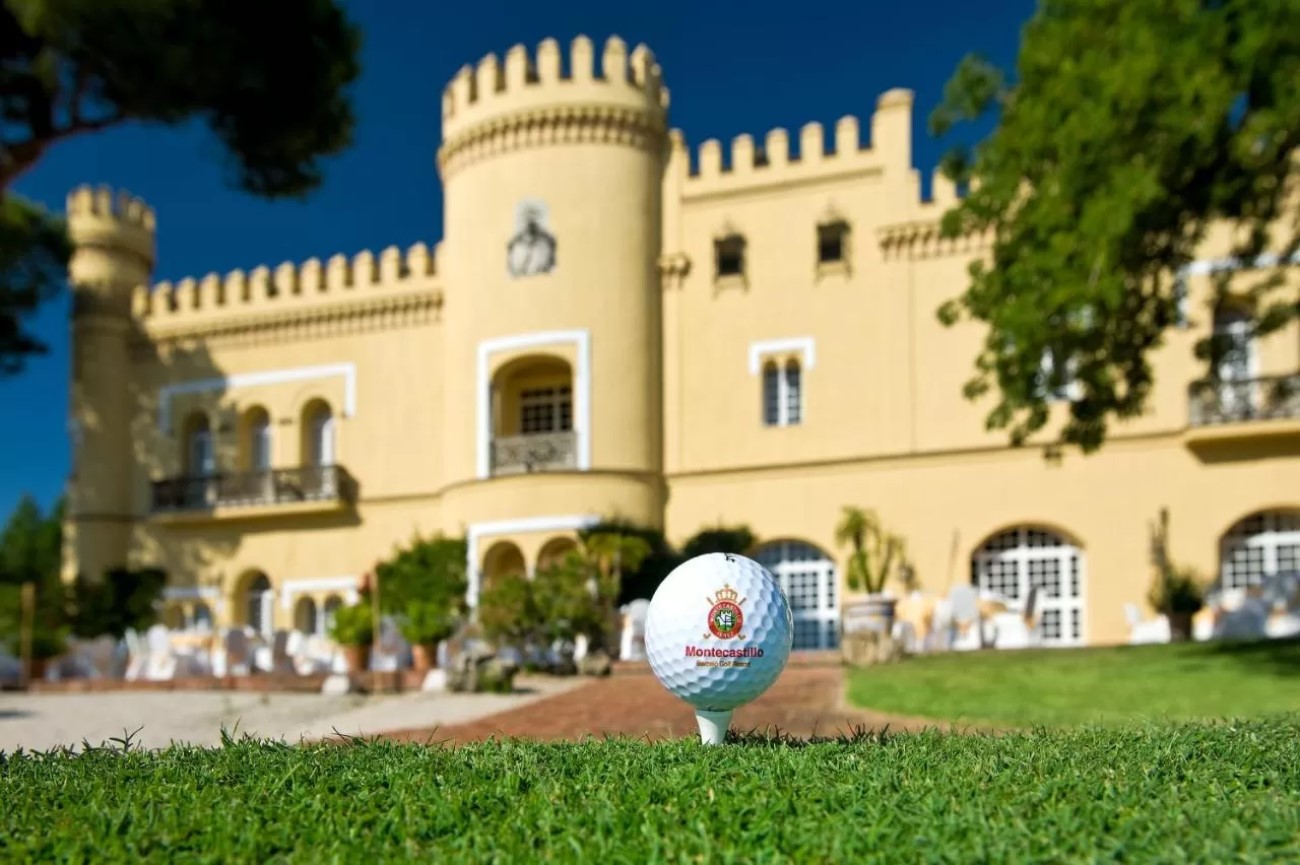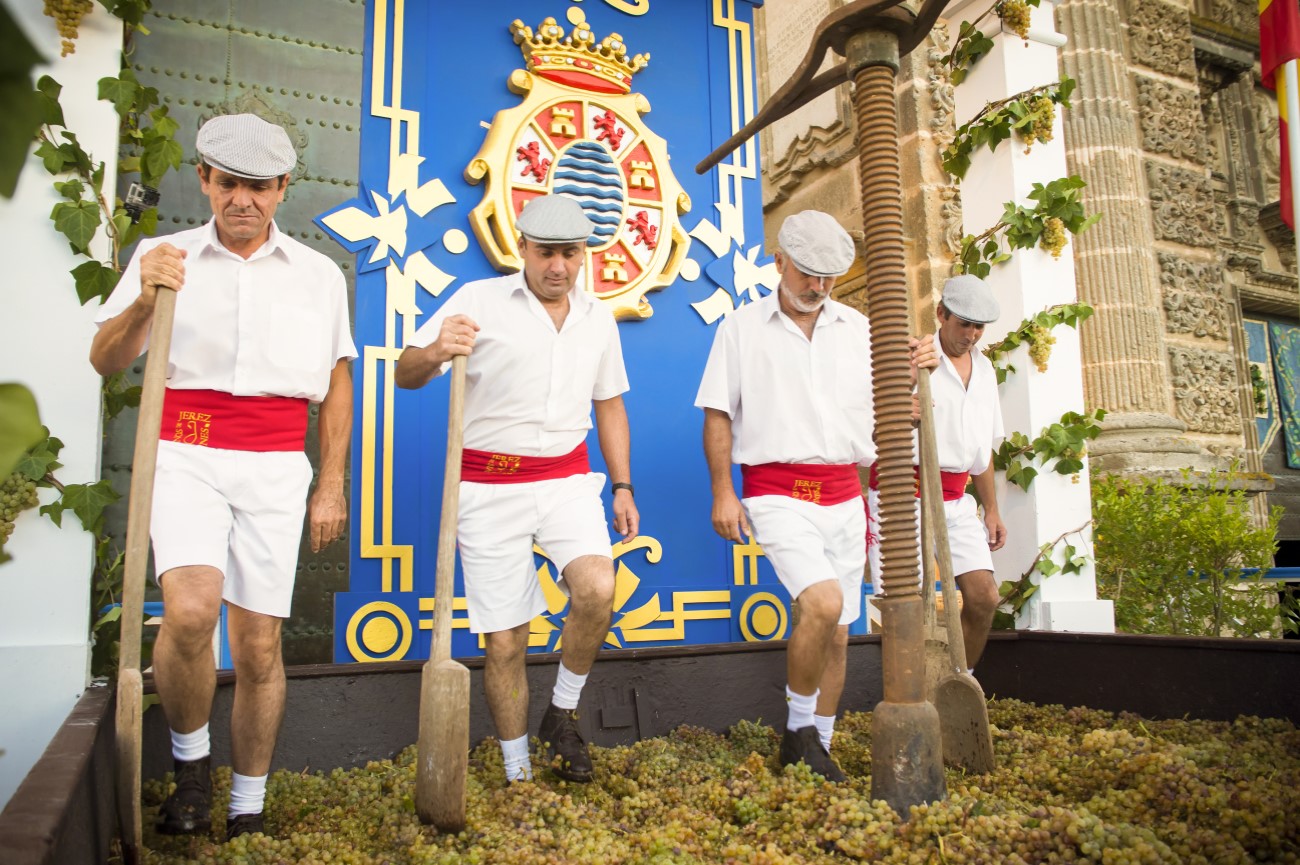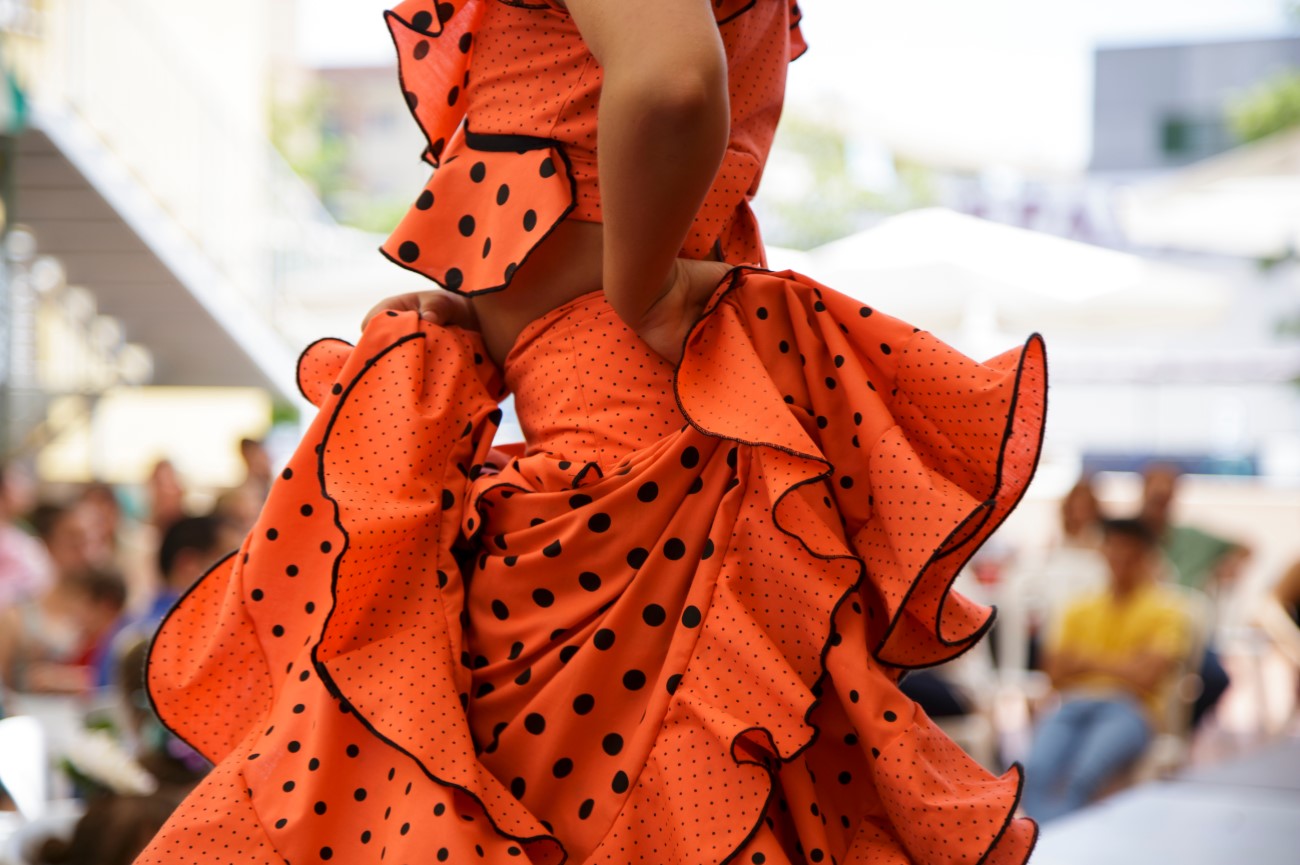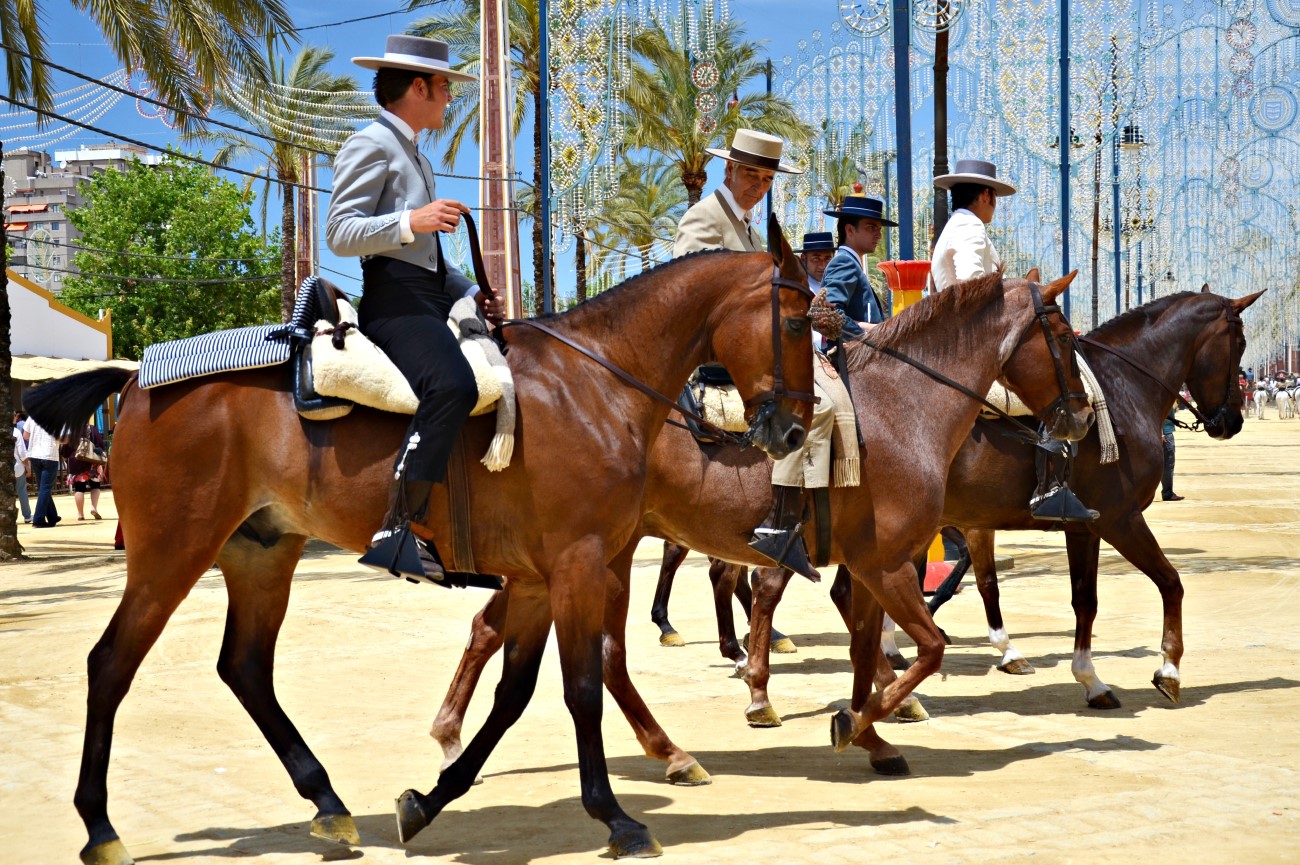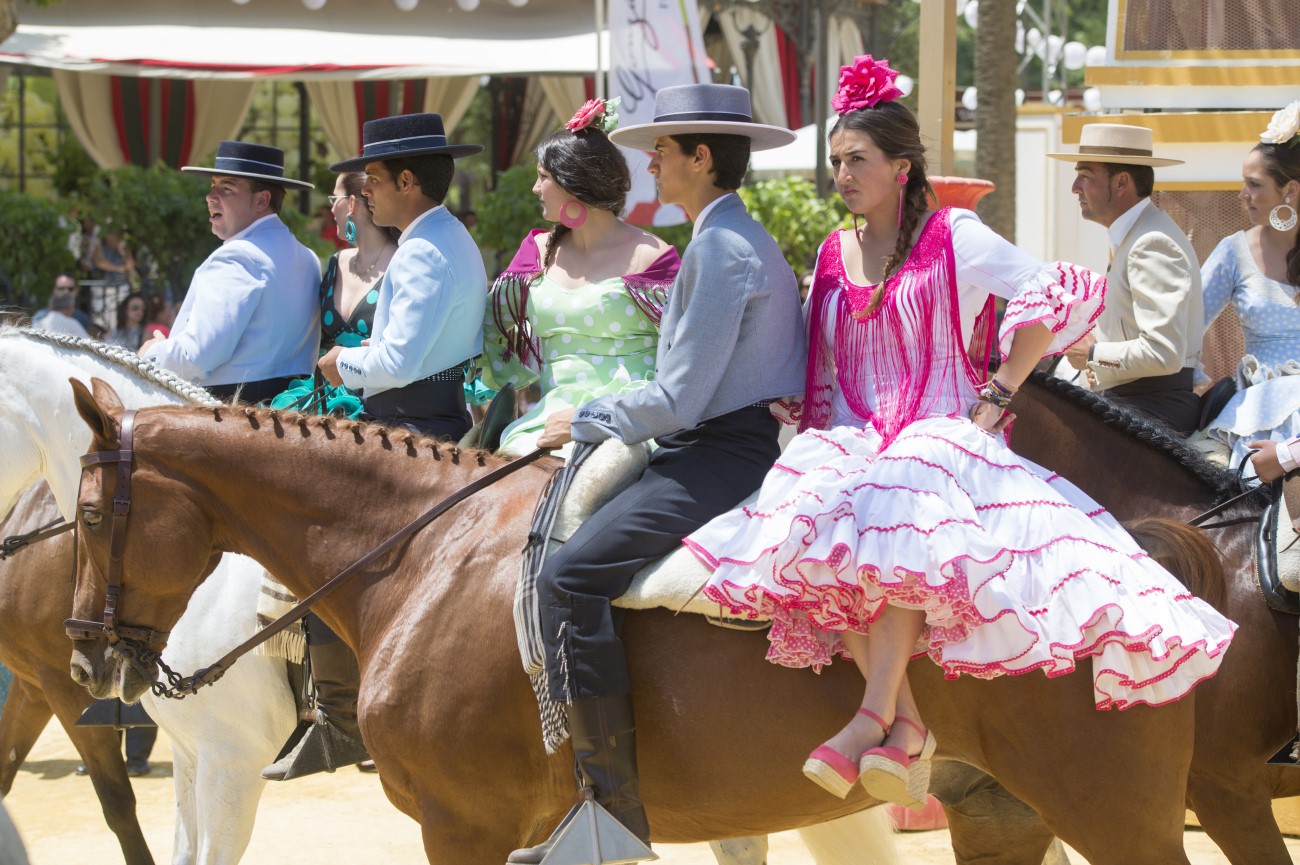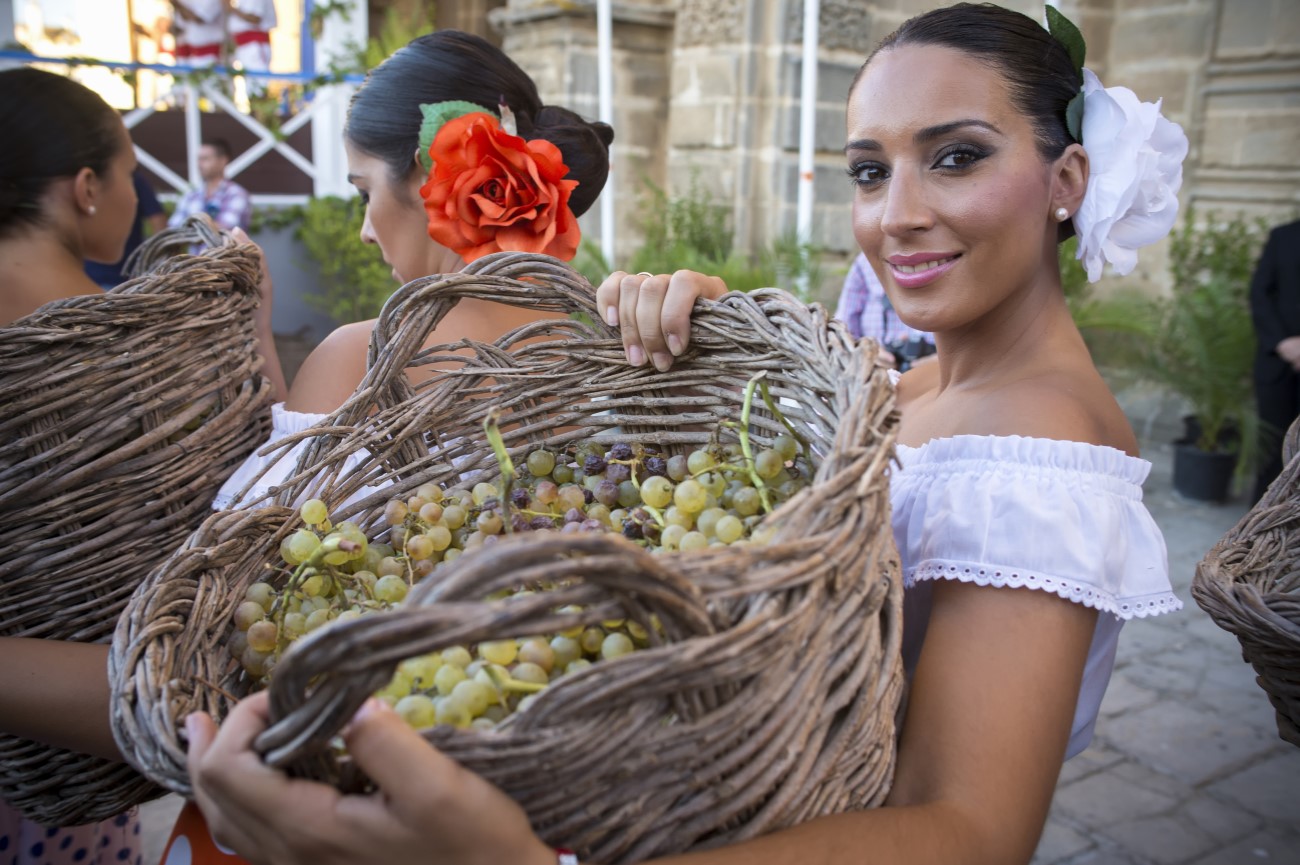Things to do in Jerez de la Frontera, Spain
Often overshadowed by bigger cities such as Seville and Cádiz, Jerez also deserves to be in your Andalucia itinerary. The Alcázar and Cathedral share some of its charm with Seville, but with fewer crowds, and some of the region's most popular festivals take place here, like the infamous Horse Fair.
Jerez is also part of the Sherry Triangle, making it the perfect stop for wine lovers. There are wineries scattered across town offering tours and tastings, and for tapas, you must try the tabancos.
Our itinerary below will show you the best things to do in Jerez, including the top places to eat and drink, as well as festivals you can't miss.
One Day In Jerez De La Frontera

Morning: Arcos De La Frontera
If you're travelling from Seville to Jerez, you can take a small detour to Arcos de la Frontera. It’s one of the many pueblo blancos (white towns) scattered across Andalucia. The town sits high above a cliff overlooking the Guadalete river. Once you get there, get lost in the maze of whitewashed houses, and then make your way to the Castillo de Arcos. This sandstone castle offers spectacular views of the town and the river below.
Jerez Train Station
There are several ways to reach Jerez de la Frontera, you can drive here or take a train from one of Andalucia’s main cities (Cádiz, Seville and Córdoba). Either way, it’s worth stopping by the town’s train station to admire its historical façade. It was established in 1854, and these days it’s among the most popular stations in Andalucia. There are also long-distance connections between Madrid and Jerez.
Sherry Wine Tasting
The best way to start your day in Jerez is with a glass of sherry. This fortified wine is made exclusively in Spain's Sherry wine region which includes the towns of Jerez, El Puerto de Santa María and Sanlúcar de Barrameda, also known as the "sherry triangle". The best places to try sherry are the local wineries (bodegas). Most of them also offer tours of the property, like the Bodega Diéz Mérito which has been producing sherry wine since 1876. Other noteworthy wineries in the area include Bodega Tio Pepe, Bodegas Lustau, Bodegas Tradición and Bodegas Fundador.
Church Of San Miguel
After a glass or two of sherry, take a walk to the Iglesia de San Miguel. The church's design was inspired by Seville's cathedral. Established between the 15th and 18th century, it combines a series of architectural styles, from the Gothic to the Renaissance and Baroque era. Make sure to look up to admire the tiled roof above the bell tower.
Alcázar
While in Jerez, it's worth paying a visit to the Alcázar. Though smaller in size than the Seville one, this 11th-century fortress remains a striking example of Moorish architecture in Spain. Its octagonal tower stands out from a distance and behind its defensive walls is a garden with colourful flower beds and a series of historic features like the Arab baths. On your left, you'll find the former mosque, converted into a chapel in the 13th century. On your right is the Palacio Villavicencio, a baroque palace which includes a camera obscura inside where you can get a panorama view of the town.
Cathedral
Just next to the Alcázar is the Jerez cathedral. It took so long to build this church that it ended up incorporating a mix of Gothic, Baroque and Neoclassical elements. Several architects contributed to its construction, which began in 1695 and lasted until 1778. Inside, the vaulted ceilings stand out with its intricate carvings, and there's a museum which showcases silverware and religious artefacts like the painting of the Virgin Mary, "La Virgen Niña" by Zurbarán. The bell tower outside resembles a minaret that could have belonged to the old mosque of Jerez.
Afternoon: Palacio Del Virrey Laserna
Behind its unassuming neoclassical facade, Palacio del Virrey Laserna hides a series of luxurious rooms full of antiques. The palace has been in the same family since the conquest of Jerez by Alfonso X in the13th century. In the 18th century, it became the residence of the Count of the Andes. Today, visitors can get a glimpse inside by joining a 40-minute guided tour. During the visit, you'll learn more about the family's history and their aristocrat lifestyle. Tours are available in English, French and Spanish.
Mercado Central De Abastos
Right in the centre of Jerez is the local food market, Mercado de Abastos. Housed in a 19th-century building, it offers a wide selection of fresh produce, including fish, meat and vegetables. There are over100 stalls inside, each with its speciality. Since Jerez is only a few kilometres away from the sea, you'll find many seafood vendors here. Prawns, sea urchins and oysters are a few of the local favourites. Even if you're not purchasing food here, it's worth going inside for the atmosphere.
Plaza De La Asunción
After visiting the market, continue to the small square Plaza de la Asunción. Surrounding it is the former town hall with its Renaissance facade, and the Gothic-Mudejar-style Iglesia de San Dionisio, a church dedicated to the city's patron saint. The square was once known as Plaza de Los Escribanos, as this was where most of the local scribes used to work.
Dancing Horse Show
Beyond sherry, Jerez is also famous for its Andalusian horses. Seeing a horse show is one thing you shouldn't miss during your visit to Jerez. The best place to see one is at the Real Escuela Andaluza del Arte Ecuestre, located a few minutes away from the town centre. The 90-minute performance showcases the traditional dancing of the Andalusian horses. Riders dress up in 18th-century attire and the horses dance away to classical Spanish music. Before you go, make sure to check the calendar on their website for the latest dates. Tickets give you access to the show and, for an extra fee, you can do a tour of the property as well.
Jerez De La Frontera Tour Map
Other Things To See In Jerez De La Frontera
- Palacio del Tiempo: Set near the horse school is the Palacio del Tiempo, home to a remarkable clock museum. Established in 1973 it features a collection of over 200 clocks with pieces by Spanish, English and French makers, distributed between two floors. Guided tours are available from Monday to Friday with the first session at 9:30 a.m. and the last at 1:15 p.m.
- Cartuja de Jerez: The Cartuja de Jerez is one of the most remarkable monasteries of the Cádiz province. Established in the 15th century by the Carthusian order, it displays a Gothic style with a mix of Baroque elements added later on. If you're driving to Jerez, it's worth taking a small detour to capture this imposing national monument.
- Circuito de Jerez: The Circuito de Jerez is a racing circuit located 10 km north from the centre of Jerez. It hosts a variety of motorbike and car racing events, including part of the Grand Prix World Championship. March, April and May are the busiest months, so keep an eye out for the calendar if you're planning to attend a race here.
Top Things To Do With Kids In Jerez De La Frontera
If you're travelling with kids to Jerez, there are other activities which you can fit in your trip. A visit to the Real Escuela Andaluza to see the horse show will probably be number one on your list. It will be even more special if you make it in time for the Feria del Caballo in May.
Not far from the town centre is the Zoobotánico, where families can see animals from around the world while wandering through botanical gardens.
Younger kids might enjoy visiting La Ciudad de los Niños y las Niñas, a large playground with slides, trampolines and a zip line.
Another worthy experience in the area is a tour of the Honey Museum. During the visit, kids will learn the process of making honey and see the beehives up close while wearing a suit.
Where To Eat In Jerez De La Frontera
Some say Jerez is the birthplace of tapas. In the old days, this small snack used to be placed over a glass of wine as a lid, or "tapa", in Spanish. It helped protect the wine from flies and sand.
The best place to eat tapas in Jerez is a tabanco. These small taverns cropped out in the 17th century, and are now scattered all over the town. You can pick one spot from the list below or try them all on a tapas crawl—it's up to you.
- Tabanco San Pablo: Dating back to 1934, San Pablo stands out for its traditional atmosphere.Old wine barrels decorate the back of the bar which serves a variety of sherry styles such as moscatel, oloroso and fino. Try their signature bread rolls and the tortilla.
- Tabanco El Pasaje: This is the oldest tabanco in Jerez. Besides serving wine and tapas, El Pasaje also hosts free flamenco shows.
- El Almacén: Set in the city centre, Almacén is famous for its wide selection of local wines. Themenu changes with the season but some highlights include their buñelos de bacalao (codfishcakes).
- Bar Juanito: This family-run restaurant is a local's favourite and, as such, it's usually quite busy. There are two specialities here: the artichokes and the berza jerezana (chickpea stew).
Jerez De La Frontera Hotels
There are hotels in Jerez for every budget, below are a few of our recommendations:
- Casa Viña De Alcántara (2 stars): Set on the outskirts of Jerez, this country house offers the perfect location for a relaxing getaway. Palm trees and cypress surround the outdoor pool, while inside there's a cosy atmosphere with wooden furniture and earthy decor. There are only nine rooms in the property, making it ideal for those looking for a bit of privacy.
- Palacio Garvey (4 stars): Housed in a 19th-century palace in the city centre this hotel was once home to the Counts of Garvey. It offers a series of spacious rooms, most featuring hydro massage baths. There's a restaurant on-site and a small library where guests can relax at the end of the day.
- Eurostars Asta Regia (4 stars): Just five minutes away from the Alcázar, you'll find this charming 4-star hotel. After a day exploring the city, you can come back and relax at their outdoor pool or the sauna which features a Turkish bath.
- Hotel Villa Jerez (5 stars): Villa Jerez is the ideal choice for those who want to stay close to the Real Escuela. Built as a private villa in the '50s, it's now a 5-star hotel complete with extensive gardens and an outdoor pool. There are 18 rooms available and some feature balconies. The hotel restaurant is open for lunch and dinner and serves traditional local dishes.
- Barceló Montecastillo Golf (5 stars): At this luxurious hotel, guests can choose between rooms or private villas with equipped kitchens. There are several sports facilities on the premises including an 18-hole golf course, tennis courts, football pitches and a jogging track. For those who prefer to relax, there's also a spa with a sauna and five swimming pools.
Best Time To Visit Jerez De La Frontera
The best time to visit Jerez de la Frontera is during early spring or fall. Like most places in the Andalucia region, the temperatures here get extremely hot in the summer, so it's best to avoid coming in July and August. You can also consider scheduling your trip around a local festivity like the Jerez Horse Fair in May or the Sherry Festival in September. If you decide to do this, make sure to book your hotel early on as they can get quite busy during these events.
Jerez De La Frontera Festivals
- Festival de Jerez: Every year in February, Flamenco takes over Jerez. The passionate Spanish dance is the central theme of this two-week festival. Aspiring and professional flamenco artists come here to join specialized workshops and communal dance classes. For visitors, the main attraction is the live flamenco shows.
- Feria del Caballo: In May, Jerez welcomes the Horse Fair, one of the most famous festivals in the Andalucia region. Riders dress in traditional attire and parade their horses around the González Hontoria fairground. The celebrations last for about a week and often include bullfights. Within the fairground, there are also the casetas, small stalls where you can grab a bite to eat.
- Fiestas de la Vendimia: For wine lovers, September is the best season to visit Jerez. It’s the time of the Fiestas de la Vendimia, a festival which celebrates the annual grape harvest. It usually starts around the 8th of September, and during this time you can see locals picking up the grapes and crushing them.


